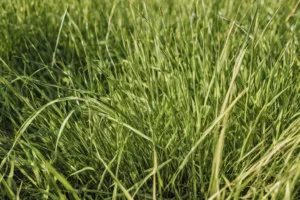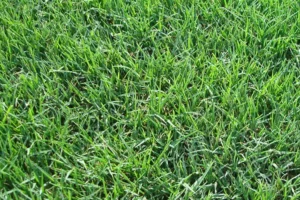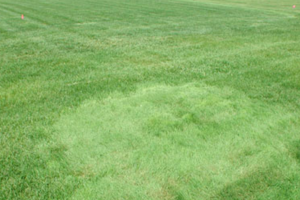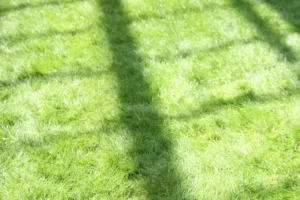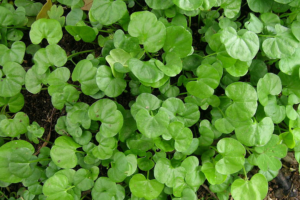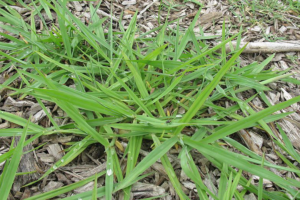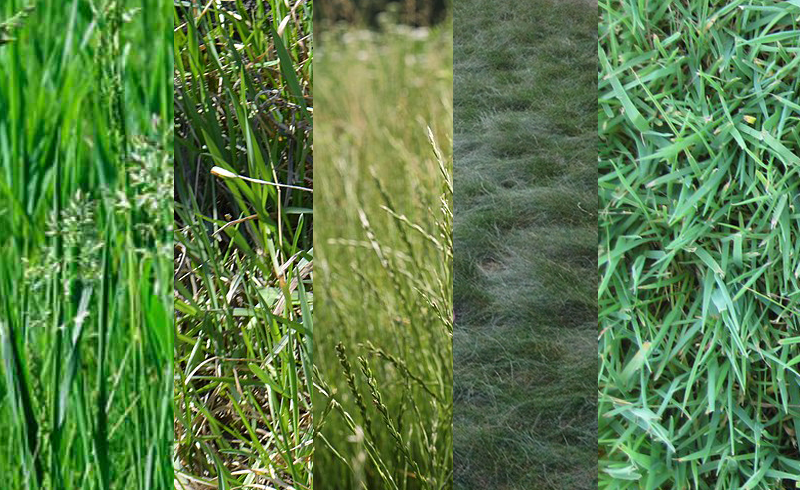
Introduction
Understanding the Importance of Choosing the Right Grass for Your Lawn
Choosing the right type of grass for your lawn is more than just about aesthetics. It’s about finding a grass type that will thrive in your specific climate and soil conditions, require a manageable level of care, and meet your preferences for color and texture. Suitable grass can make your lawn a joy to look at and a pleasure to use, while the wrong grass can turn lawn care into a constant struggle.
In the Northern United States, where winters can be harsh and summers relatively mild, cool-season grasses are typically the best choice. These grasses are adapted to grow in cooler temperatures and can withstand the freezing conditions of northern winters. They also tend to be more shade-tolerant than warm-season grasses, which is advantageous in areas where trees or buildings may block the sun for part of the day.
Brief Overview of the Factors Affecting Grass Growth in Northern Climates
The climate in the Northern United States presents unique challenges for lawn care. Winters can be harsh, with freezing temperatures and heavy snowfall. Conversely, Summers can be mild to hot, with periods of heavy rainfall or drought. These conditions require grass types that can withstand various temperatures and moisture levels.
Soil conditions also play a crucial role in determining which grass types will thrive. Some grasses prefer sandy soils, while others do well in clay or loam. The soil’s pH level, which can be influenced by rainfall and the underlying rock type, can also affect grass growth. Understanding your soil conditions and choosing a grass type that is well-suited to them can make a big difference in the health and appearance of your lawn.
Understanding Grass Types
Explanation of Warm-Season and Cool-Season Grasses
Grasses can generally be categorized into two main types based on their growth patterns: warm and cool. Warm-season grasses, as the name suggests, thrive in warm weather. They grow most vigorously during the late spring and summer when temperatures are high. These grasses are common in the southern parts of the United States, where the climate is typically hot and humid.
On the other hand, cool-season grasses have their peak growth periods during the cooler temperatures of spring and fall. They are generally more tolerant of cold temperatures and can stay green throughout the winter, making them an excellent choice for lawns in the Northern United States. While they can withstand the heat of summer, they typically require more water during these periods and may go dormant if conditions become too dry.
Why Cool-Season Grasses are Best for Northern Climates
Cool-season grasses are typically the best lawn choice in the Northern United States. These grasses are adapted to grow in cooler temperatures and can withstand the freezing conditions of northern winters. They also tend to be more shade-tolerant than warm-season grasses, which is advantageous in areas where trees or buildings may block the sun for part of the day.
Cool-season grasses also have the advantage of providing a green lawn for a more extended period. They grow early in the spring and remain active until the first hard frost. Even in winter, many cool-season grasses will retain their color when temperatures are not too severe. This means that with the right choice of cool-season grass, you can enjoy a lush, green lawn for most of the year.
Kentucky Bluegrass
Description and Characteristics of Kentucky Bluegrass
Kentucky Bluegrass, a cool-season grass, is not native to the United States but has found widespread acceptance, especially across the East Coast. It can also be grown in the west with proper irrigation. This grass species is known for its “V” shaped leaves and can reach a height of about 20-24 inches at maturity.
Related: WaterSaver’s Magic: The Ultimate Sun & Shade Resilient Grass Seed! – Review
Kentucky Bluegrass is unique in its ability to spread and create new grass plants through its rhizomes. These rhizomes grow pretty quickly and form a thick sod in the spring. There are over 100 cultivars of this grass, and most stores selling grass seeds will have a variety to choose from. Bluegrass seed is also frequently sold with other grass seeds, providing a more balanced lawn.
Ideal Growing Conditions and Maintenance Tips for Kentucky Bluegrass
The best time to plant Kentucky Bluegrass seed is in the fall when the soil temperatures are between 50-65 degrees F. The soil must be warm enough for germination and root development to survive through the winter. You can plant Kentucky Bluegrass or combine several varieties for a diverse blend.
Kentucky Bluegrass requires at least 2 inches of water per week to keep it healthy, growing, and green. If your area gets less water than this, irrigating will be necessary. If irrigation is required, the turf should be watered in small amounts daily instead of once weekly in large amounts. If the grass does not get enough water, it may go dormant in the summer months.
Kentucky Bluegrass will do much better when nitrogen is applied. In the first year of growing, 6 pounds per 1000 square feet may be needed. Years after, 3 pounds per 1000 square feet should be adequate. Less nitrogen may be needed in areas with rich soil.
Benefits and Potential Challenges of Growing Kentucky Bluegrass in Northern Climates
Kentucky Bluegrass is sometimes used for grazing livestock. If allowed to develop correctly, it can withstand low grazing. Because of this, it does well as a grazing crop when mixed with other cool-season grasses.
However, Kentucky Bluegrass lawns can be covered in dandelions, crabgrass, and clover if weeds grow. The best form of control is using a pre-emergent herbicide on lawns annually. The best time to do this is in the early spring before weeds are noticeable.
Young grass does best when kept at a 2-inch height. It should be mowed before it ever reaches 3 inches. Grass should never be mowed lower than this because it would cause young seedlings to be pulled up and ruin the overall health of the lawn.
Perennial Ryegrass
Description and Characteristics of Perennial Ryegrass
Perennial Ryegrass is a cool-season grass widely used throughout the United States. It’s known for its fast germination rate and quick establishment, making it a popular choice for permanent and temporary lawns. This grass is fine-bladed and hard-working, providing a lush green color to your lawn.
Perennial Ryegrass is not related to the rye plant that produces cereal grain but to the turf grass known as annual ryegrass. Unlike annual ryegrass, which is short-lived and used for temporary stability, perennial ryegrass returns year after year in northern climates to establish a permanent lawn. It’s native to Europe and Asia but has been widely accepted in the United States, especially in the cool, humid Pacific Northwest.
Ideal Growing Conditions and Maintenance Tips for Perennial Ryegrass
Perennial Ryegrass germinates best with temperatures between 50°F and 65°F, making early fall the best time to plant this grass. It’s also used to overseed southern lawns for winter color once the warm-season grass goes dormant and turns brown.
This grass type requires about 1 inch of water per week, including rainfall. Water deeply and thoroughly to encourage more profound root growth. Traditional perennial ryegrass varieties have relatively shallow roots, historically limiting their heat and drought tolerance. However, improved perennial ryegrass varieties have been developed with greater heat and drought tolerance.
Perennial Ryegrass prefers sun, but it will tolerate lightly shaded conditions. It’s also a key component in cool-season grass seed mixes for northern and transition zone lawns and athletic fields. Its fast germination and rapid seedling growth provide quick color and stability, while slower grass germinating grasses such as Kentucky bluegrass are established.
Benefits and Potential Challenges of Growing Perennial Ryegrass in Northern Climates
Perennial Ryegrass is a versatile grass type that can provide a lush, green lawn in various conditions. It’s particularly well-suited to the cool, humid climates in many parts of the Northern United States. Its fast germination rate and quick establishment make it popular for homeowners who want to see results quickly.
However, like all grass types, Perennial Ryegrass does have its challenges. It naturally grows in clumps and spreads through vertical shoots known as tillers rather than spreading by rhizomes or horizontal above-ground stems called stolons. This means that it can take some time to establish a dense, uniform lawn. Additionally, while improved varieties have more excellent heat and drought tolerance, Perennial Ryegrass can still struggle in hot, dry conditions. Regular watering and lawn care practices are essential for maintaining a healthy Perennial Ryegrass lawn.
Fine Fescues
Description and Characteristics of Fine Fescues
Fine Fescues are a group of cool-season grasses known for their delicate texture and shade tolerance. They are often used in grass seed mixtures for lawns in cooler climates, like the Northern United States. Fine Fescues include several significant species, such as Hard Fescue, Sheep Fescue, Chewings Fescue, Creeping Red Fescue, and Slender Creeping Red Fescue.
Related: WaterSaver’s Magic: The Ultimate Sun & Shade Resilient Grass Seed! – Review
These grasses are perfect for temperate and cooler regions, predominantly maritime and low mountainous climates—most species clump and form tufts, except the red creeping varieties, which are spread by rhizomes. The leaves are medium green to blue-green and have a fine texture. Fine Fescues are often part of a grass mixture to create a northern shade-tolerant grass with low moisture and fertilizer needs. The grass stays green year-round in most regions and is drought-tolerant.
Ideal Growing Conditions and Maintenance Tips for Fine Fescues
Fine Fescues prefer difficult soil conditions like rocky, sandy, or clay. They are the most shade-tolerant turfgrasses and can produce vigorous, thick turf in low light. However, they may go dormant in summer periods with temperatures above 90 degrees F. (32 C.) but will revive when more excellent conditions arrive.
Fine Fescues require a soil pH of 5.0 to 6.5. As with turf grass, preparing the bed before seeding, drilling, or laying sod is best. Fine Fescue blends are not recommended for heavily trafficked areas, such as athletic fields, but perform well in standard home landscapes.
Benefits and Potential Challenges of Growing Fine Fescues in Northern Climates
Fine Fescues are most often used as a lawn. They do not help graze situations. The shade tolerance of the plant is attractive to gardeners with numerous trees, and in low light, the turf is still vigorous and thick.
One of the characteristics of Fine Fescue for lawns is its tolerance for low mowing, especially Chewings and Hard Fescues. The grass has low irrigation needs but will require consistent moisture when establishing. Thick thatch is a problem that develops as the lawn matures and can cause difficulty with irrigation. The plants tolerate low fertility conditions but will gradually brown without supplemental nitrogen.
As a general rule, Fine Fescue care doesn’t require a pesticide, as most insects do not seem to do any damage. However, fungal issues occur, especially in coastal and high-moisture regions.
Tall Fescue
Description and Characteristics of Tall Fescue
Tall Fescue is a cool-season grass highly adaptable to various climates, including cold, heat, drought, and shade. Originating from Europe, it was introduced to the United States in the early 1800s and has since become a popular choice for lawns due to its resilience and durability.
Tall Fescue is known for its deep roots that can reach 2 to 3 feet, contributing to its superior heat and drought tolerance. Unlike grasses that spread by horizontal stems, Tall Fescue grows in clumps and spreads primarily through vertical shoots called “tillers,” which grow from the base of the grass plant itself. This growth habit makes Tall Fescue easy to contain and keep out of flower beds but limits its capacity to repair when lawn damage occurs.
Ideal Growing Conditions and Maintenance Tips for Tall Fescue
Tall Fescue prefers soil pH between 5.5 and 7.5 and can tolerate difficult soil conditions such as rocky, sandy, or clay. It establishes readily from seed and germinates more quickly than Kentucky bluegrass. The best time to plant Tall Fescue is during its peak growth periods in the cool fall and spring seasons.
Tall Fescue requires about 1 inch of water per week, including rainfall. Deep, thorough irrigation supports more profound root growth. It also tolerates shade better than all common cool-season lawn grasses except fine fescues. It can produce vigorous and thick turf in low light. However, it may go dormant in summer periods with temperatures above 90 degrees F but will revive when more excellent conditions arrive.
Benefits and Potential Challenges of Growing Tall Fescue in Northern Climates
Tall Fescue is an excellent choice for lawns in the Northern United States due to its adaptability to various climates and its tolerances for cold, heat, drought, and shade. It offers greater heat tolerance than other cool-season grasses and greater cold tolerance than warm-season grass options, resulting in beautiful year-round lawns in this challenging transition area.
However, Tall Fescue does have its challenges. It naturally grows in clumps and spreads primarily through vertical shoots known as tillers, which means it can take some time to establish a dense, uniform lawn. Additionally, while it has deep roots make it drought-tolerant, Tall Fescue can still struggle in hot, dry conditions. Regular watering and proper lawn care practices are essential for maintaining a healthy Tall Fescue lawn.
Bentgrass
Description and Characteristics of Bentgrass
Bentgrass, specifically Creeping Bentgrass, is a cool-season specialty grass primarily used for specific applications like golf course putting greens, lawn bowling greens, and lawn tennis facilities. Its fine texture and bright green hue make it a favorite for these applications. However, it’s not commonly used for home lawns due to the high skill and expense needed for maintenance. This grass is best suited for cool, humid regions and thrives in sunny areas, although it can tolerate some shade. One of its notable characteristics is its ability to tolerate low temperatures, but it tends to discolor early in the fall.
Creeping Bentgrass has a very fine texture; its leaves are flat, narrow, and rolled in the bud. It lacks auricles but has a long, tapered ligule. This low-growing grass has a shallow root system and spreads through stolons, forming a mat or thatch layer above the soil line.
Ideal Growing Conditions and Maintenance Tips for Bentgrass
Maintaining Bentgrass, especially the Creeping variety, demands great attention. It requires frequent watering, mowing, aerating, and dethatching. Additionally, it needs high levels of fertilizer to thrive. Due to its shallow root system, it is crucial to ensure it gets adequate water, especially during dry periods.
When considering planting Bentgrass, it’s essential to be aware of its high maintenance needs. While it’s a favorite for specific applications like golf courses due to its fine texture and appearance, it might not be the best choice for a typical home lawn unless one is prepared for the intensive care it demands.
Benefits and Potential Challenges of Growing Bentgrass in Northern Climates
Bentgrass is a suitable choice for Northern climates with its cool-season nature. It can withstand cooler temperatures and provide a lush green cover for most of the year. Its fine texture and ability to form a dense mat make it visually appealing, especially for specialized applications.
However, there are challenges to consider. Bentgrass grows in clumps and spreads primarily through stolons, so establishing a uniform lawn can take time. Its high maintenance needs can be a deterrent for many homeowners. The grass can also go dormant during high summer temperatures but will usually revive with the arrival of more relaxed conditions. Proper care, including regular watering, mowing, and fertilization, is crucial for maintaining a healthy Bentgrass lawn.
Choosing the Right Grass for Your Lawn
Assessing Your Lawn’s Specific Needs
Every lawn is unique, and understanding its needs is the first step in choosing the right grass type. You can start by evaluating the climate of your region. Northern climates typically experience colder winters and milder summers, which means cool-season grasses like Kentucky Bluegrass, Perennial Ryegrass, Fine Fescues, Tall Fescue, and Bentgrass are more likely to thrive. However, even within these grass types, there are variations in shade tolerance, drought resistance, and maintenance requirements.
Next, consider the amount of sunlight your lawn receives. Some grasses, like Bentgrass, thrive in sunny areas but can tolerate some shade. In contrast, Fine Fescues are known for their shade tolerance. If your lawn has a mix of sunny and shaded areas, consider a blend of grass seeds to cater to the different conditions.
Factors to Consider: Soil, Traffic, and Aesthetics
Soil type plays a significant role in grass selection. Some grasses prefer sandy soils, while others thrive in clay or loam. Before planting, testing your soil’s pH and nutrient levels is a good idea. This will help you choose the right grass and also inform any soil amendments that might be necessary.
Think about the amount of traffic your lawn will receive. If you have children or pets that love playing outdoors, you’ll need hardy grass that can withstand wear and tear. Tall Fescue, for instance, is known for its durability. On the other hand, if aesthetics are your primary concern and your lawn won’t see much activity, you might opt for fine-textured grass like Bentgrass, commonly used on golf courses, for its lush appearance.
Maintenance Requirements and Long-Term Care
Every grass type comes with its own set of maintenance requirements. While some grasses are low-maintenance, others might need frequent mowing, watering, and fertilization. For instance, Bentgrass requires high maintenance, including regular watering, mowing, and dethatching. If you want a hands-off approach, you should consider a grass type with lower maintenance needs.
Lastly, could you think about the long-term care of your lawn? Some grasses, like Perennial Ryegrass, establish quickly and offer fast results. Others might take longer to establish but offer benefits in the long run. Consider factors like disease resistance, drought tolerance, and how the grass will look throughout the seasons.
Making an Informed Decision
Choosing the suitable grass for your lawn is a decision that will impact its health, appearance, and the amount of care it requires for years to come. By assessing your lawn’s specific needs, considering factors like soil type, traffic, and aesthetics, and understanding the maintenance requirements of different grass types, you can make an informed decision that will ensure a lush, green lawn that meets your expectations and lifestyle.
Frequently Asked Questions
What are cool-season grasses?
Cool-season grasses are types of grasses that thrive in cooler temperatures, typically found in the Northern United States. They grow most vigorously during the cooler temperatures of spring and fall. Examples include Kentucky Bluegrass, Perennial Ryegrass, Fine Fescues, Tall Fescue, and Bentgrass.
Why is Bentgrass commonly used in golf courses?
Bentgrass has a fine texture and bright green hue, making it visually appealing for golf courses. It can also tolerate low mowing, which is ideal for golf greens.
How often should I water Tall Fescue?
Tall Fescue requires about 1 inch of water per week, including rainfall. Watering deeply and thoroughly is essential to encourage more profound root growth.
Which grass type is best for shaded areas in Northern climates?
Fine Fescues are known for their shade tolerance and can produce a vigorous, thick turf even in low light conditions.
How can I improve the soil for my grass?
Before planting, testing your soil’s pH and nutrient levels is a good idea. Depending on the results, you might need to amend the soil with lime (to raise pH) or sulfur (to lower pH). Adding organic matter like compost can also improve soil texture and nutrient content.
Can I mix different grass types for my lawn?
Yes, many homeowners and landscapers mix different grass types to cater to various conditions in the lawn. For instance, a mix of Kentucky Bluegrass and Perennial Ryegrass can provide quick establishment and year-round green color.
How do I deal with weeds in my Kentucky Bluegrass lawn?
Kentucky Bluegrass lawns can be prone to weeds like dandelions and crabgrass. A pre-emergent herbicide in early spring, before weeds become noticeable, is an effective control method.
What’s the difference between Fine Fescues and Tall Fescue?
Fine Fescues are a group of grasses known for their fine texture and shade tolerance. They include species like Hard Fescue and Creeping Red Fescue. On the other hand, Tall Fescue is a single species known for its durability and adaptability to various climates.
Conclusion
Reflecting on the Importance of Choosing the Right Grass
Selecting the right grass for your lawn is not just about aesthetics; it’s about creating a sustainable environment for your outdoor space. The right grass can:
- Reduce Maintenance: By choosing a grass type suited to your region’s climate and your lawn’s specific conditions, you can significantly reduce the care your lawn requires.
- Save on Water Bills: Grasses adapted to your area’s typical rainfall will require less supplemental watering, conserving water and saving you money.
- Increase Property Value: A well-maintained lawn can enhance curb appeal and potentially increase the value of your property.
Understanding the unique characteristics of each grass type, from Kentucky Bluegrass’s lush green appearance to Fine Fescues’ shade tolerance, can help homeowners make informed decisions that benefit their wallets and the environment.
Embracing the Journey of Lawn Care
Lawn care is a journey, not a destination. As seasons change and years go by, your lawn’s needs might evolve. What’s important is to:
- Stay Informed: Continuously educate yourself about best practices in lawn care. The more you know, the better equipped you’ll be to address challenges as they arise.
- Seek Expertise: Don’t hesitate to consult with local nurseries, agricultural extensions, or lawn care professionals. They can offer valuable insights tailored to your region.
- Enjoy the Process: Lawn care can be therapeutic. Whether you’re mowing, watering, or simply lounging on your grass, take a moment to appreciate the beauty of nature and the sense of accomplishment that comes with nurturing a living ecosystem.
Ultimately, the grass is sometimes greener on the other side; it’s greenest where you water it. By choosing the right grass type for your Northern lawn and committing to its care, you can enjoy a lush, green oasis for years.
Related: WaterSaver’s Magic: The Ultimate Sun & Shade Resilient Grass Seed! – Review

Bob Green, a passionate lawn care enthusiast with over two decades of landscaping experience, is this website’s proud owner. His vast knowledge of horticulture and dedication to helping homeowners maintain beautiful lawns are reflected in the valuable content he shares on his platform. John has always been interested in Agrostology.









